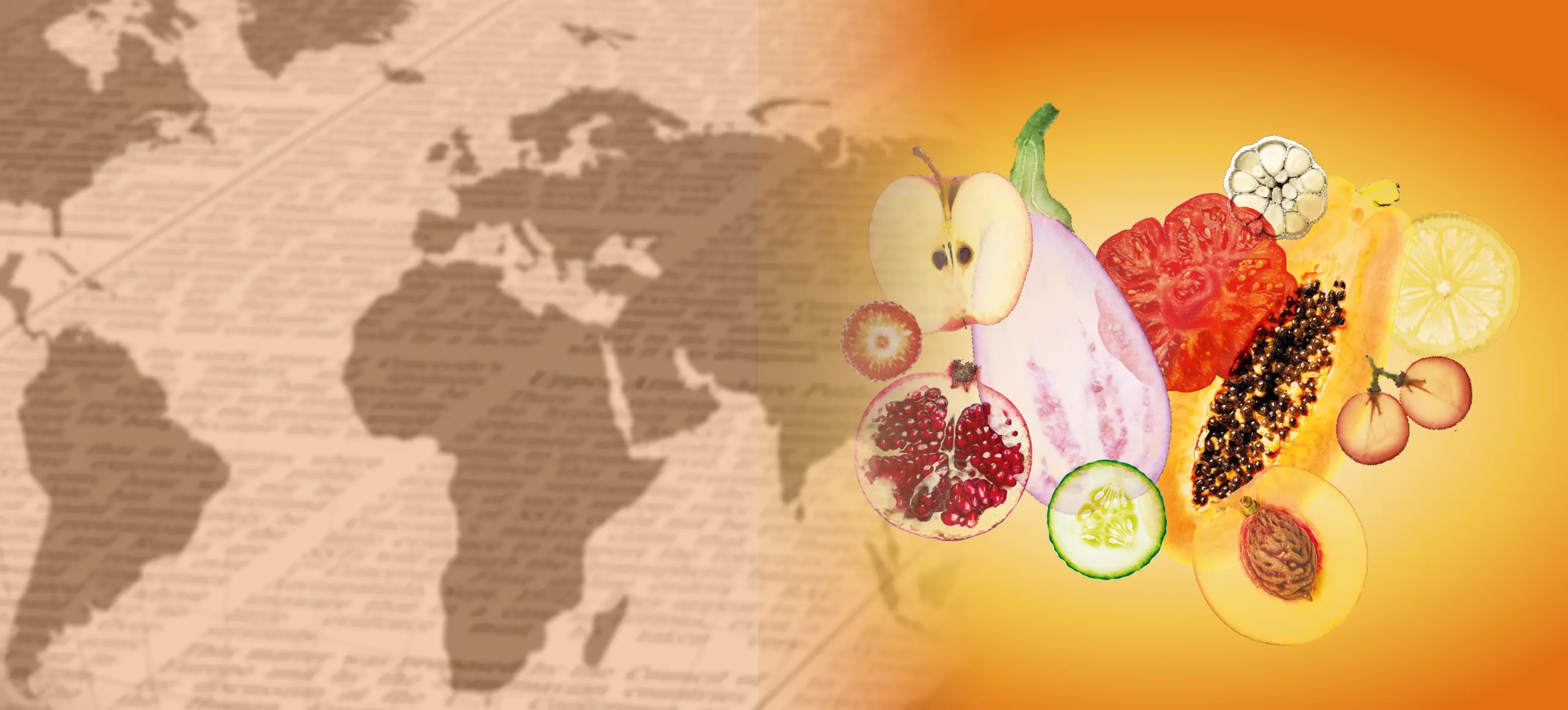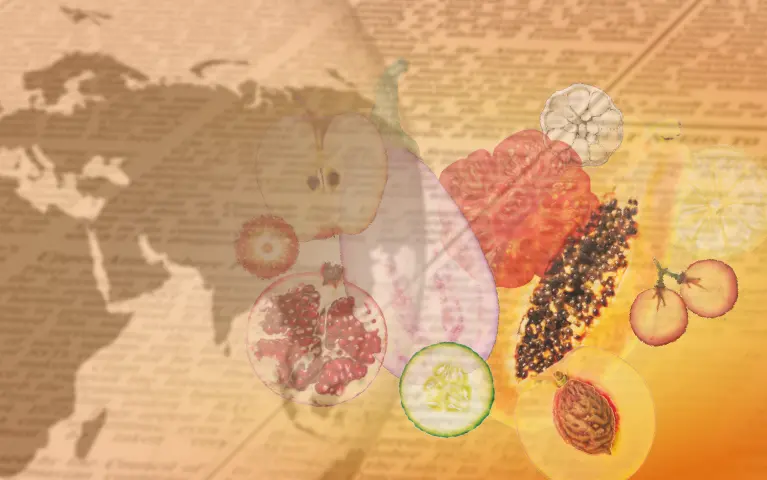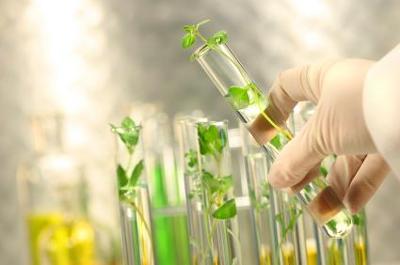

Plant breeding in horticulture: genetic innovation for more sustainable agriculture
Discover how plant breeding in horticulture drives sustainability, productivity and crop quality. Genetic innovation for more efficient agriculture that is adapted to the future.
Plant improvement in horticulture: key to sustainability and quality
Plant breeding in horticulture is a key activity. Obtaining new plant varieties that are more productive, resistant and better adapted to market demands is essential in the context of integrating practices and strategies that seek to minimise the environmental and social impact of productive activities, while ensuring the long-term economic viability and sustainability of the horticultural production system. This work is essential for food and the economy, as the competitiveness and quality of this activity transcends all links in the chain, benefiting society, the environment and the economy as a whole.
The process and timelines for horticultural genetic improvement
The development of new plant varieties through modern genetic improvement is a complex activity that requires a large long-term financial investment: achieving genetic variability, selecting the cultivars obtained until varieties adapted to specific conditions are developed, choosing the parental lines that can transmit the desired characteristics, crossbreeding, selection and subsequent refinement are actions that, depending on the species, take up to 10 or 12 years and require costly investments in materials and technical personnel, with an average cost of several million euros before a new variety can be brought to market.
Main objectives of plant breeding in horticulture
Resistance to pests and diseases
Incorporating genes resistant to pathogens (fungi, bacteria, and viruses) and insects, reducing the use of plant protection products.
Increased yield and productivity
Varieties that produce a higher yield per unit area.
Improved intrinsic fruit quality
Characteristics such as colour, size, flavour, shape, firmness, shelf life and nutritional content.
Versatility for different markets and uses
Varieties adapted for fresh consumption, industry, freezing, and pre-prepared and ready-to-eat products.
Functional and medicinal value
Plant material with a higher content of active ingredients that support health (vitamins, antioxidants, etc.).
Tolerance to abiotic stress
Varieties that can withstand salinity, extreme temperatures, humidity and degraded soils.
Climate adaptation and diverse cropping systems
Crops suitable for different areas, early or late planting, open field, greenhouse, soilless cultivation, etc.
Improved harvesting and reduced pesticide use
Plants that allow for more efficient harvesting, grouped or staggered ripening, structures that promote aeration and reduced use of treatments.
Reduced production costs
Improvements that optimise the use of water, nutrients or plant protection products.
Traditional and biotechnological tools in plant breeding
The combination of traditional and biotechnological tools is fundamental in current genetic improvement, from classical plant breeding to biotechnology and molecular genetics, all of which open up a new world of innovation and research for the continuous improvement of new plant varieties.
The Spanish horticultural model as a benchmark
The Spanish professional horticultural model, which constantly introduces new plant material, has made it possible to maintain the profitability of crop farms. The great evolution in varietal diversity in horticultural species is an example of the intense activity of varietal innovation in all cultivated species. For more than 30 years, constant solutions to problems with diseases, fungi, bacteria and viruses have enabled crop sustainability. Breeders have been solving problems with viruses such as TMV and PMMV in peppers and fungi such as powdery mildew, obtaining resistant varieties that are in line with professional agriculture's goal of reducing active ingredient residues in fruit, which has improved crop health and the safety of the products consumed. New breeding material continues to be developed to improve resistance not only to diseases but also to pests such as whitefly, aphids and thrips, which today pose a threat to the profitability and sustainability of professional horticultural crops.
Varietal diversity: examples for different horticultural crops
From traditional cucumbers to modern Almería cucumbers
From the Brunex, thick and prickly and sometimes a little bitter, to the current Almería cucumber, smooth, intense green, of a size and quality suited to all types of market, with optimal texture and juiciness, for fresh consumption, industry and fresh-cut products, moving into snack concepts adapted to consumption by children, a whole Veggie world that follows the steps demanded by today's society.
The multicoloured horticultural offering
There is no species, however far removed from mainstream horticultural consumption, that strays from the multicoloured rainbow of varieties that breeders have developed and brought to market thanks to constant research and innovation in new varieties. We are currently experiencing the greatest nutritional and functional variety in the history of agri-food: hairless aubergines with no spines, black striped, round, long and semi-long, seedless and less astringent; parthenocarpic courgettes with fleshy seeds and colours ranging from light green to deep black; Brassicas that can be used for their fruits, leaves and stems; polymorphic lettuces with a wide range of different types, textures and colours; sweet onions; seedless watermelons, for fresh consumption or industry, with high dry matter content, mini watermelons, black, striped, with multiple shapes and colours of pulp; Melons with high Brix indices and high sugar levels, a wide range of types and unconventional flavours; Tomatoes with high shelf life, with improved flavour, branch, smooth-round, cherry, pear, ribbed, chocolate, cocktail, ribbed, pink, etc. all of them improved with disease resistance, in an exceptionally accelerated time frame, such as the tomato brown rugose virus, a tobamovirus that threatens the interests of producers and consumers due to the loss or reduction of profitability and lack of supply of goods on the shelves.
Quantitative impact and benefits of horticultural plant improvement
According to a recent study published by the Cerdá Institute, the fundamental contribution of seed and plant improvement is increased productivity. It is estimated that this accounts for 50% of the increase in global agricultural productivity during the second half of the 20th century. Furthermore, it has enabled more sustainable production in order to achieve the objectives set by the EU through the European Green Deal.
Reduction in the use of fertilisers and plant protection products
Secondly, the use of fertilisers has been reduced. In the case of tomatoes, the figure has reached more than 375,000 Mt in the last 5 years. The use of plant protection products has also been reduced, achieving savings of 540,000 kg per year and increasing resistance to pests and diseases.
Water and energy savings
On the other hand, plant improvement has contributed to lower water and energy consumption. In tomato cultivation, for example, a total of 35 million cubic metres of water has been saved annually, which is equivalent to the water in 14,000 Olympic swimming pools. Plant breeding has also made it possible to save 3.5 million Gj/year, which is similar to the consumption of 100,000 households in a year.
Collaboration and future challenges in genetic breeding
Plant breeding is a joint effort involving breeders who promote research and development of new varieties, private entities, research centres and universities that contribute to basic and applied research, the development of new tools and the training of professionals, and, of course, farmers who collaborate by testing new varieties and contributing their knowledge about crop and market needs.
Hybridisation, the sexual crossing of two individuals of different genetic makeup, two different varieties or species, to enhance desired parental traits in offspring, a system of plant crossing and genetic selection for the development of new, stable crops of higher quality and yield, has responded to the needs of society and the demands of the market. We hope that regulatory progress in Europe will not halt the implementation of new genetic editing techniques, including CRISPR, which will enable us to shorten development times, intervene more precisely in improvement objectives, and help meet the future challenges of socio-economic and environmental sustainability in the field of agricultural production and food supply in the 21st century.
Conclusion: plant breeding for more profitable, sustainable and future-proof horticulture
Plant breeding in horticulture is not
Plant breeding in horticulture not only improves crop profitability, but also contributes directly to environmental, social and economic sustainability goals, ensuring healthy, safe and high-quality food for present and future generations.






